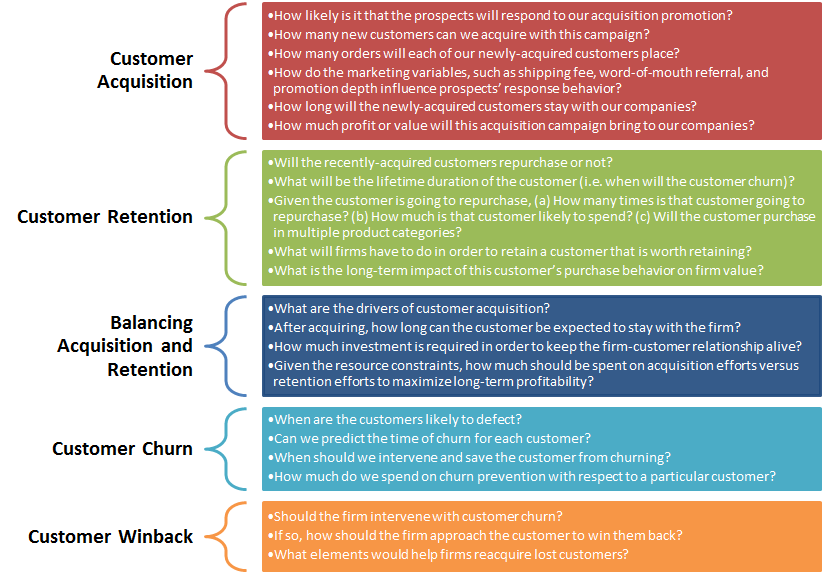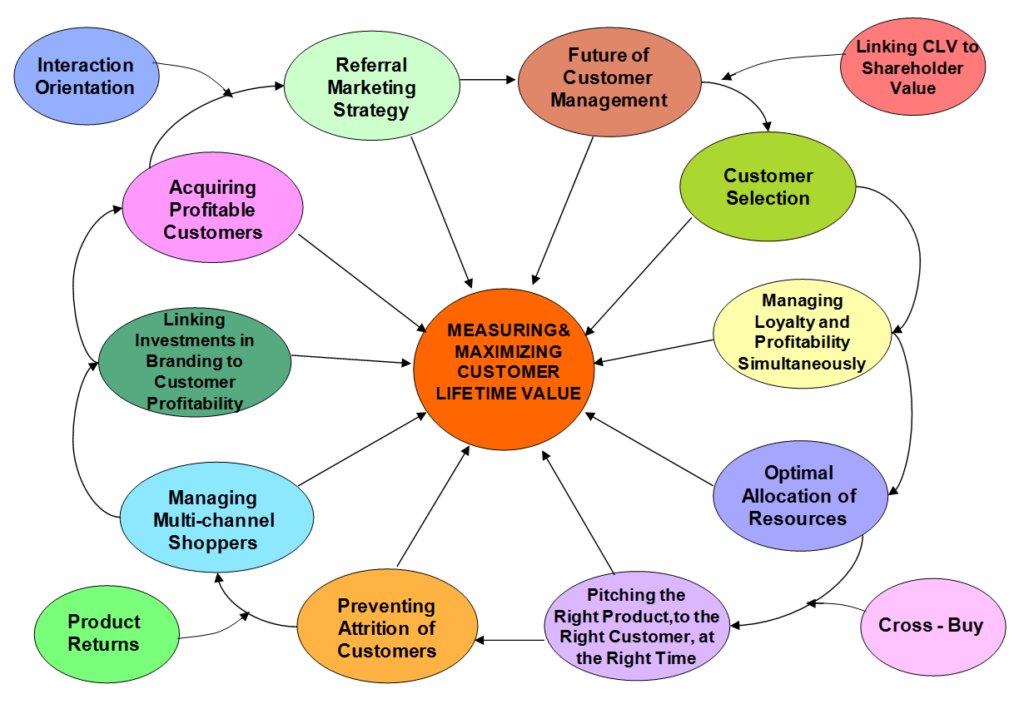ABOUT CUSTOMER LIFETIME VALUE
How Can CLV Be Maximized?
By understanding each customer’s lifetime value, a firm can maximize its overall firm value by boosting the number, scope and duration of value-creating customer relationships. In terms of marketing implications, CLV enables firms to address marketing issues with greater confidence and make more strategically sound marketing decisions (Venkatesan, Rajkumar and V. Kumar (2004), Kumar, V., Denish Shah, and Rajkumar Venkatesan (2006)). Furthermore, the CLV metric is not just about the dollar value of future customer profitability. It extends beyond that and aids in strategy development on one or more of the following: customer acquisition, customer retention, balancing customer acquisition and retention, customer churn, and customer winback (Kumar, V., and Werner Reinartz (2016)). The figure below presents some of the questions faced by firms that CLV can provide an answer to, and help develop strategies for.
A Sample List of Strategies that CLV Can Be Used For

Answers to the set of questions presented in above figure can be found in actionable marketing strategies known as the Wheel of Fortune Strategies. This cycle begins with selecting the right customers based on future profitability. The strategies that follow this aim at efficient management and retention of customers. The experience (or information) obtained by implementing these strategies sheds light on future customer selection and profit maximization. The figure below illustrates the Wheel of Fortune Strategies for maximizing CLV (Kumar, V. (2008)).
Wheel of Fortune Strategies for Maximizing CLV

Even though these strategies can yield great results when implemented separately, they work best when implemented as a whole. The knowledge acquired from implementing each strategy can be used to improve on other strategies, and this information can be collectively used to refine future marketing initiatives. All these strategies are powered by CLV and derive the benefit of using a forward-looking metric to evaluate a customer’s worth to the firm. Because the CLV takes into account the customer’s past and future purchasing behavior, it gives an accurate picture of a customer’s worth to the firm and thus enables managers to design and modify their marketing strategies accordingly.
References
Venkatesan, Rajkumar and V. Kumar (2004), “A Customer Lifetime Value Framework for Customer Selection and Resource Allocation Strategy,” Journal of Marketing (October), Vol. 68 (4), pp. 106 – 125.
Kumar, V., Denish Shah, and Rajkumar Venkatesan (2006), “Managing Retailer Profitability: One Customer at a time!”, Journal of Retailing, Vol. 82 (4), October, pp. 277 – 294.
Kumar, V., and Werner Reinartz (2016), “Creating Enduring Customer Value,” Journal of Marketing, 80 (6), 36-68.
Kumar, V. (2008), Managing Customers for Profit: Strategies to Increase Profits and Build Loyalty. Upper Saddle River, NJ.